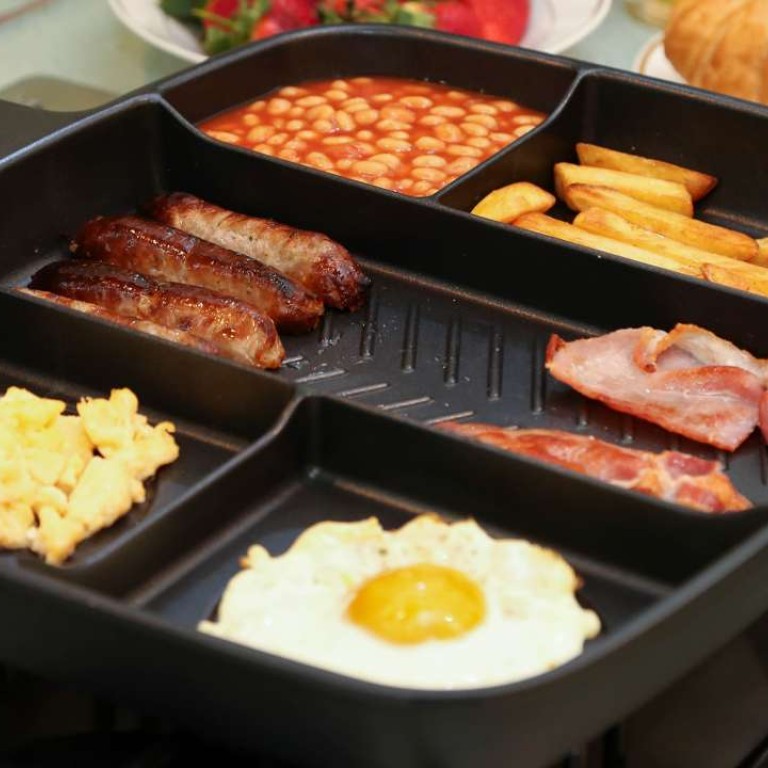
Designers turn to crowdfunding sites to bring ideas to life
Enthusiastic backers help turn innovative ideas into products that can make a difference in daily lives
A pan that cooks multiple foods simultaneously; a pillow of light that does double-duty as a phone charger; slick desktop units that clean and cool the air around the user. These home and design products may never have seen light of day without great swathes of regular people backing their production.
According to statistics-collating firm Statista.com, crowdfunding is an increasingly viable source of financial support across numerous disciplines; in 2010, there were 3,910 successful projects on Kickstarter, a number that skyrocketed to 22,252 four years later. Designers who are taking to sites like Kickstarter and Indiegogo to fund their design innovations can bring in more than they asked for: the recently completed campaign for LuminAid, a solar inflatable lantern and phone charger, yielded almost US$280,000; the company set its target at only US$15,000. The product, which will retail for around US$40, will be released this summer, said co-founder Andrea Sreshta.
Hong Kong-based Dreambiz three years ago successfully used Kickstarter to fund the production of its MasterPan, a stovetop cooking utensil with five separate sections allowing users to grill fish, fry eggs and sear vegetables without the foods touching each other. The company raised US$53,000 – US$8,000 more than its goal, and the US$60 pan is now being sold on multiple etail platforms such as Amazon (where it’s in the top ten in its category) and in US stores like Target and Bed, Bath and Beyond and in Hong Kong through its website.

The out-of-the-gate success of the MasterPan has led the company to return to Kickstarter to launch two upcoming products. Still, Dreambiz sales director Deepak Nagrani says rampant copying mars the process.
“Factories [were] knocking us off as soon as we were done funding [the MasterPan],” said Nagrani, who was reluctant to reveal too much about new products except that one would “revolutionise the spice grinder”. Even with design and utility patents in the US, European Union and China, Nagrani said, “factories still copied ... in China nothing is sacred. [Intellectual property] laws are still a joke.”
(Certainly, a few US-based companies contacted for this article declined to participate because of fears that their ideas would be ripped off in China before coming to market.)

For those who use highly proprietary technology, idea theft is less of an problem.
Evapolar, which has offices in St Petersburg, Cyprus, Xiamen and Guangzhou, recently raised close to US$1.2 million on Indiegogo – 259 per cent of what it sought – for what it describes as the “world’s first personal air conditioner.”
Eugene Dubovoy, chief executive officer and co-founder, said he was “not so worried” about the potential for fakes because of the years of research he and his engineering team had put into making an effective desktop air conditioner.
“The most important thing is that we don’t tell people how we make them,” he said. “There is a lot of intellectual property protection in place.”
Dubovoy said he was spurred to create the product because of the wasted energy and money created by regular air conditioning units.
“They are not focused on a specific space,” he said. “They cool a whole room even if only one person is
in it.” The Evapolar brings down the temperature of a three- to four-square-metre space.
Evapolar hit its US$100,000 mark within a week of starting the campaign.
“The audience [on these sites] are real innovators,” he said. “They are open-minded when it comes to new products and they give valuable feedback, which is important when launching a new product.”
The US$179 product started shipping worldwide last summer, and the company is now producing additional units. Dubovoy said tweaks were made based on feedback from Indiegogo backers – which he said was more valuable than even the funding.

“Crowdfunding is not for the money,” said Harold Han, founder and chief technology officer of Sprimo Labs, a US- and China-based company that is soon to introduce a personal humidifier. “It’s a shout out to the world that we’re here. Even if a brand has institutional investment, crowdfunding is great marketing.”
Han began a Kickstarter campaign recently for his futuristic-looking PAM – Personal Air Module – which is designed to remove airborne germs, dust and allergens, and is based on Sprimo’s original product, a smartphone device that reads air quality.
Han – originally from Liaoning province in northeastern China – said he was motivated to create the product because of the chronic air pollution in the country. (Anshan city, his birthplace, is known for its iron and steel industry; Han’s grandfather and uncle, both non-smokers, died of lung cancer.) And he feels his product will resonate with enthusiastic backers.

